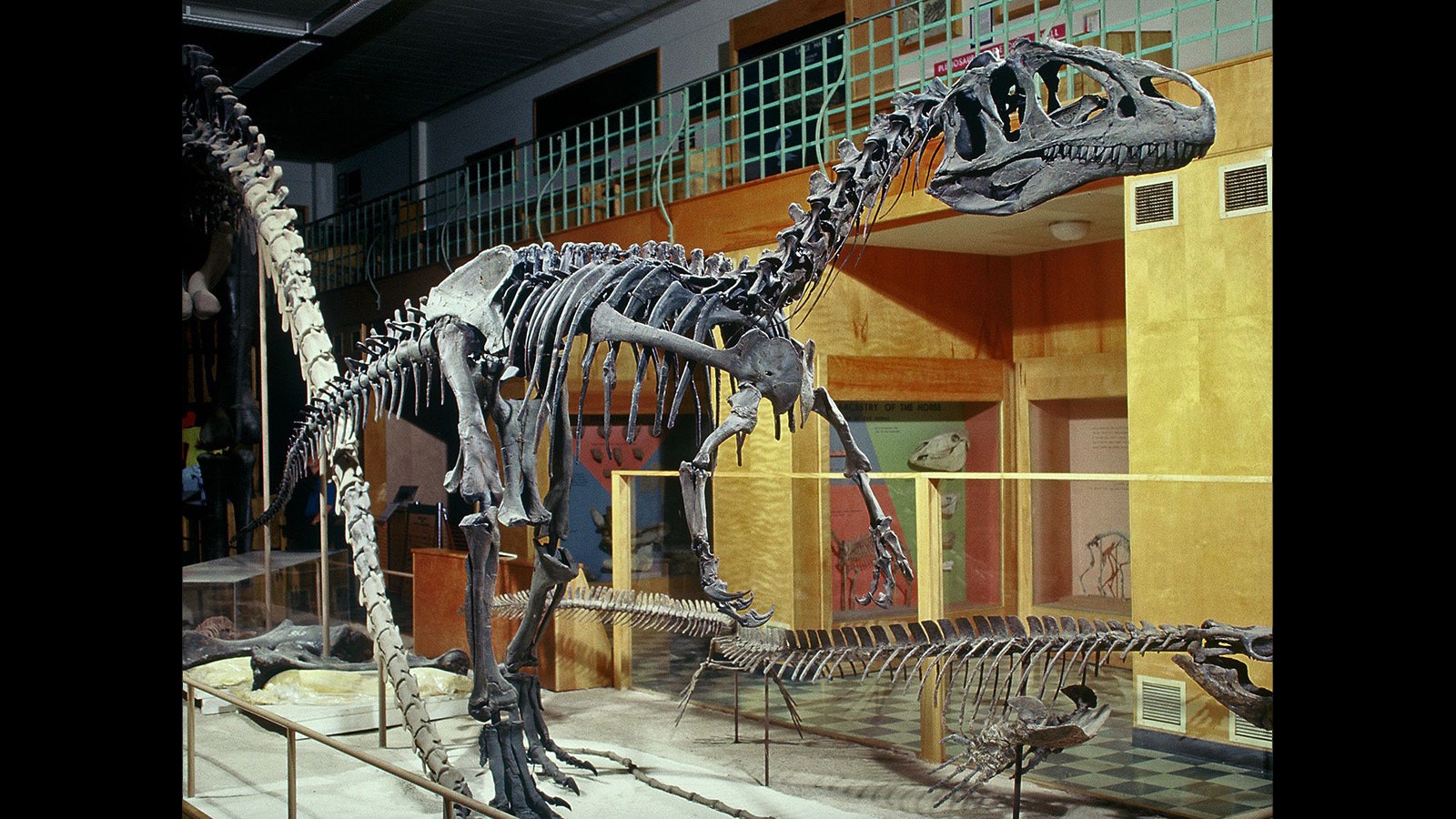One of Wyoming’s largest celebrities is getting another autopsy. The Emmy Award winner has been dead for 150 million years but is still disclosing the personal secrets of its life.
“Big Al,” Wyoming’s famous Allosaurus, remains one of the best dinosaur skeletons ever found. Since its discovery outside Shell more than 30 years ago, Big Al has become one of the world's most famous and iconic dinosaurs.
The exceptionally well-preserved skeleton tells a dramatic story of the life of a Jurassic predator and the painful challenges it endured. That’s why it continues to be a valuable object of scientific inquiry, with the latest effort to add to Big Al’s story underway in Montana.
“Big Al’s been featured in a BBC documentary and elsewhere looking at the life of this animal because of the record of its life and times in its bones,” said Dr. John Scannella, the John R. Horner curator of paleontology at the Museum of the Rockies in Bozeman.
Scannella is leading a team of paleontologists in the latest autopsy of Big Al, as they're confident the long-dead dinosaur has a lot more to reveal.
Bumps And Oozes
The biography of Big Al started about 150 million years ago during the Late Jurassic Period, when the Allosaurus lived its brief and painful life of 17 years before dying in a dried-up riverbed.
Soon after, water and sediment covered the dead dinosaur, perfectly preserving most of its bones.
In 1991, the fossilized skeleton of Big Al was found outside Shell and excavated by paleontologists from the Museum of the Rockies and the University of Wyoming Geological Museum. The skeleton was 95% complete, miraculous by the standards of paleontology.
Once excavated, it was taken to Bozeman for preparation and study. Big Al is now a permanent resident of the Museum of the Rockies and one of the museum’s most prized specimens.
Scannella said the “pivotal” study of Big Al was published by Rebecca Hanna in 2002. In her paper, Hanna identified 19 bones with preserved injuries and diseases, including several broken ribs, an injured hand and a massive pus-filled growth on the middle toe of the right foot.
Inspired by the dramatic story revealed in the fossils, the BBC produced “The Ballad of Big Al,” using CGI technology to tell the story of the dinosaur’s life and death, while highlighting Hanna’s research. The half-hour special, released Dec. 25, 2000, won two Emmy Awards and made Big Al an international celebrity.
Big Al’s battered body tells a dramatic story, but Scannella and his team believe even more of the dinosaur’s life story is waiting to be found in its fossils.
History And Histology
Since the latest research into Big Al is ongoing, Scannella and his team are staying tight-lipped about their work. But they’re looking in all the right places to find the information they need.
Scannella told Cowboy State Daily the key to the research is bone histology, where thin slices are cut out of the fossils and examined under a microscope. While the outside of dinosaur bones reveals a great deal of information, the inside provides an in-depth look into aspects of prehistoric life hidden from the naked eye.
“You can learn a lot from the outside of dinosaur bones,” he said. “The size, the shape, how big the animal was, was it eating meat or plants. By looking inside the bones there’s a lot more we can uncover. We can get into the details of the paleobiology by looking inside.”
Big Al has a history of histology, as histological samples were taken from its injured bones. The microscopic examination unlocked the origins of the injuries, revealing that even though Big Al had the durability to survive intense trauma, the subsequent healing was difficult and painful.
One thing Scannella will say about his research is that he and his team aren’t focused exclusively on Big Al’s bumps and bruises.
“We’re looking at different things, a new chapter beyond the injuries,” he said. “The more different kinds of studies we can apply to a particular dinosaur, applying different techniques and analyses, the more we can learn about that animal’s life and the world around it.”
The research team is taking histological samples from the bones they believe will give them the knowledge they seek, but the exact nature of their research is a tightly guarded secret. Everything will be revealed in an upcoming research paper, writing the next chapter in Big Al’s biography.
But how exciting will that chapter be?
“It depends on what we find out,” Scannella said. “But this study will help flesh out the details of this famous dinosaur’s life.”
Andrew Rossi can be reached at arossi@cowboystatedaily.com.





